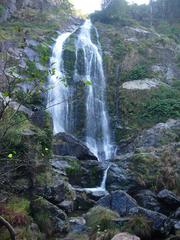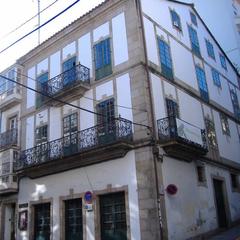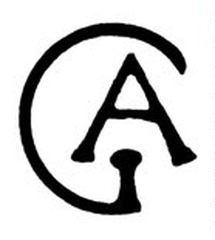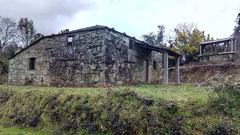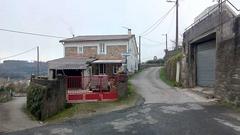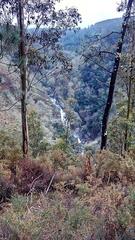Guide to Visiting Spain’s National Exhibition of Ship Building in Ferrol
Date: 16/08/2024
Introduction
Spain’s National Exhibition of Ship Building, commonly known as Exponav, situated in the historic town of Ferrol, Galicia, is a remarkable destination for maritime history enthusiasts. Housed in the beautifully restored 18th-century Edificio de Herrerías, an exquisite example of Spanish Neoclassical architecture, Exponav showcases the evolution of shipbuilding from its inception to modern-day innovations (historylab.es). Ferrol, with its strategic naval base established in the early 18th century by King Philip V, has played a pivotal role in Spain’s maritime history, controlling the country’s interests in the North Atlantic (Spain.info). The museum’s exhibits span various key historical periods, including the Middle Ages, the Spanish Empire, and the Industrial Age, providing a comprehensive overview of technological advancements in shipbuilding. Additionally, Exponav offers an array of educational programs and special events catering to both professionals and the general public, making it an invaluable resource for understanding maritime heritage (artsandculture.google.com).
Table of Contents
- [History and Significance of Exponav](#history-and-significance-of-exponavhistory-and-significance-of-exponav)
- [Origins and Establishment](#origins-and-establishmentorigins-and-establishment)
- [Historical Context](#historical-contexthistorical-context)
- [Evolution Through the Ages](#evolution-through-the-agesevolution-through-the-ages)
- [20th Century Developments](#20th-century-developments20th-century-developments)
- [Significance of Exponav](#significance-of-exponavsignificance-of-exponav)
- [Educational and Cultural Impact](#educational-and-cultural-impacteducational-and-cultural-impact)
- [Visitor Experience](#visitor-experiencevisitor-experience)
- [Practical Information for Visitors](#practical-information-for-visitorspractical-information-for-visitors)
- [Architectural and Cultural Heritage](#architectural-and-cultural-heritagearchitectural-and-cultural-heritage)
- [Visiting the Museum of Naval Construction in Ferrol](#visiting-the-museum-of-naval-construction-in-ferrolvisiting-the-museum-of-naval-construction-in-ferrol)
- [Exhibits and Collections at Spain’s National Exhibition of Ship Building](#exhibits-and-collections-at-spains-national-exhibition-of-ship-buildingexhibits-and-collections-at-spains-national-exhibition-of-ship-building)
- [Ground Floor: Construction Techniques and Ship Parts](#ground-floor-construction-techniques-and-ship-partsground-floor-construction-techniques-and-ship-parts)
- [Upper Floor: Themed Rooms](#upper-floor-themed-roomsupper-floor-themed-rooms)
- [The Astano Shipyard: “Miracle in the Estuary”](#the-astano-shipyard-miracle-in-the-estuarythe-astano-shipyard-miracle-in-the-estuary)
- [The Navy, Its Ships, and Its Schools](#the-navy-its-ships-and-its-schoolsthe-navy-its-ships-and-its-schools)
- [Shipping Companies and Ports](#shipping-companies-and-portsshipping-companies-and-ports)
- [Multimedia Collection](#multimedia-collectionmultimedia-collection)
- [Virtual Tour](#virtual-tourvirtual-tour)
- [Ticket Prices and Visiting Hours](#ticket-prices-and-visiting-hoursticket-prices-and-visiting-hours)
- [Travel Tips and Nearby Attractions](#travel-tips-and-nearby-attractionstravel-tips-and-nearby-attractions)
- [Accessibility](#accessibilityaccessibility)
- [Special Events and Guided Tours](#special-events-and-guided-toursspecial-events-and-guided-tours)
- [Photography and Best Spots](#photography-and-best-spotsphotography-and-best-spots)
- [Exhibits and Collections at Spain’s National Exhibition of Ship Building](#exhibits-and-collections-at-spains-national-exhibition-of-ship-buildingexhibits-and-collections-at-spains-national-exhibition-of-ship-building)
- [Ultimate Guide to Visiting Museo Naval in Ferrol](#ultimate-guide-to-visiting-museo-naval-in-ferrolultimate-guide-to-visiting-museo-naval-in-ferrol)
- [Visitor Experience and Tips](#visitor-experience-and-tipsvisitor-experience-and-tips)
- [Navigating the Museo Naval](#navigating-the-museo-navalnavigating-the-museo-naval)
- [Exhibits and Collections](#exhibits-and-collectionsexhibits-and-collections)
- [Best Times to Visit](#best-times-to-visitbest-times-to-visit)
- [Comprehensive Coverage](#comprehensive-coveragecomprehensive-coverage)
- [Visitor Information](#visitor-informationvisitor-information)
- [Special Events and Guided Tours](#special-events-and-guided-toursspecial-events-and-guided-tours)
- [Nearby Attractions](#nearby-attractionsnearby-attractions)
- [Local Cuisine](#local-cuisinelocal-cuisine)
- [Cultural Insights](#cultural-insightscultural-insights)
- [Practical Information](#practical-informationpractical-information)
- [Seasonal Events](#seasonal-eventsseasonal-events)
- [Accessibility](#accessibilityaccessibility-1)
- [Photography Tips](#photography-tipsphotography-tips)
- [FAQ](#faqfaq)
- [Final Tips](#final-tipsfinal-tips)
- [Visitor Experience and Tips](#visitor-experience-and-tipsvisitor-experience-and-tips)
History and Significance of Exponav
Origins and Establishment
Exponav, officially known as Spain’s National Exhibition of Ship Building, is a maritime museum located in Ferrol, a town in the Province of A Coruña, Galicia, northwest Spain. The museum is housed in the historic Edificio de Herrerías (Herrerías Building), an 18th-century example of Spanish Neoclassical architecture that has been fully restored. The museum was inaugurated on March 10, 2008, and has since become a significant cultural and educational institution dedicated to the history and evolution of shipbuilding in Spain.
Historical Context
Ferrol’s strategic importance as a naval base dates back to the early 18th century when King Philip V recognized the value of its estuary and established the arsenal in A Graña and the shipyards. This development allowed Ferrol to control Spain’s maritime interests in the North Atlantic, particularly against threats from England. The town’s naval engineers also built the A Magdalena neighborhood, characterized by its geometric layout typical of the Enlightenment, which contributed to the city’s growth to 20,000 inhabitants by the end of the 18th century.
Evolution Through the Ages
Exponav’s exhibits cover various periods, including the Middle Ages, the Spanish Empire, the Discovery of America, the Enlightenment, and the Industrial Age. The museum provides a comprehensive overview of the technological advancements in shipbuilding, from its humble beginnings to contemporary innovations.
In the 19th century, King Ferdinand VII moved all naval units to Cádiz, leaving Ferrol without military activity or industry. However, the Marquis de Molíns later promoted a naval rearmament plan that reactivated Ferrol’s shipyards. In 1858, Ferrol launched Spain’s first steamship, followed by the first iron-hulled ship in 1881.
20th Century Developments
The 20th century saw significant developments in Ferrol’s shipbuilding industry. In 1909, the shipyards and part of the arsenals were leased to the Spanish Society of Shipbuilding, which included English social participation, ensuring the transfer of technology. This period also saw the modernization of Ferrol, with improvements in electrification, drinking water, sewerage, and communications.
During the Spanish Civil War, Ferrol played a strategic role as the most important center for the construction, repair, and supply of ships for Franco’s Spain. After the war, the naval industry in Ferrol was reactivated, employing up to 20,000 workers by 1950.
Significance of Exponav
Exponav is considered by experts to be the most complete maritime museum in Europe dedicated to shipbuilding. The museum’s significance lies in its comprehensive collection of historical artifacts, models, and documents that illustrate the evolution of shipbuilding technology over the centuries.
The museum’s exhibits include more than a hundred historical pieces, such as the battleship Spain and a switchboard from the early 20th century. The first floor hosts the permanent exhibition “Lighthouses: 2000 years guiding navigators,” which features important pieces like the lighthouse Candieira or Estaca de Bares.
Educational and Cultural Impact
Exponav was established as a joint initiative by the Spanish Navy and the Association of Naval Engineers of Spain, with participation from various entities, including the Ministry of Development of Spain, the Junta de Galicia, the Provincial Council of La Coruña, and the Ferrol Town Hall. The museum aims to serve both professionals in the shipbuilding and naval engineering fields and the general public, offering a rich educational experience.
Special programs are available for visiting students from public schools and other educational institutions, making the museum an invaluable resource for learning about maritime history and technology.
Visitor Experience
Exponav offers free admission, making it accessible to all visitors regardless of their budget. The museum is open year-round, with varying hours depending on the season. Visitors can explore a wide range of exhibits, including models, tools, archaeological remains, documentaries, buoys, and lanterns. The museum is highly recommended for anyone interested in maritime history, with many visitors praising its comprehensive and well-organized displays.
Practical Information for Visitors
- Visiting Hours: Typically, Exponav is open from 10 AM to 2 PM and 5 PM to 8 PM from Tuesday to Saturday, and from 10 AM to 2 PM on Sundays. It’s advisable to check their official website for current hours.
- Tickets: Admission is free. Donations are welcome to support the museum’s activities.
- Accessibility: The museum is wheelchair accessible, with ramps and elevators available.
- Travel Tips: Exponav is located in the city center, close to other historical sites like the Ferrol Arsenal and the Magdalena District. Public transportation options are available, including buses and trains.
- Nearby Attractions: While visiting Exponav, consider exploring other nearby attractions such as the Castle of San Felipe, the Naval Museum, and the beaches of Ferrolterra.
- Special Events and Tours: The museum occasionally hosts special events, guided tours, and interactive workshops. Check their website for upcoming events.
Architectural and Cultural Heritage
The Edificio de Herrerías, which houses Exponav, is itself a significant cultural and architectural landmark. The building’s restoration has preserved its historical integrity while adapting it for use as a museum. The structure features vaulted naves and is distributed over two floors, providing a fitting backdrop for the museum’s extensive collection.
Visiting the Museum of Naval Construction in Ferrol: Exhibits, Tickets, and Visitor Tips
Introduction
Discover the rich maritime heritage of Ferrol, Spain, by visiting the Museum of Naval Construction. This guide provides comprehensive information about the museum’s exhibits, ticket prices, opening hours, and tips to make the most of your visit. Located in the historical heart of Ferrol, the museum offers a deep dive into the evolution of shipbuilding techniques from the 18th century to modern times.
Exhibits and Collections at Spain’s National Exhibition of Ship Building
Ground Floor: Construction Techniques and Ship Parts
The ground floor of the Museum of Naval Construction is dedicated to various construction techniques used in shipbuilding, providing a detailed look into the operation and different parts of a ship. This section is particularly engaging for those interested in the technical aspects of naval architecture. Visitors can explore models and diagrams that illustrate the evolution of shipbuilding techniques from the 18th century to modern times.
One of the highlights on this floor is the exhibit of the wreck of the Fragata Magdalena. This frigate sank in the Vivero estuary in 1810 and was recovered by the Navy between the 1970s and 1980s. The exhibit includes artifacts recovered from the wreck, providing a tangible connection to the maritime history of the region.
Upper Floor: Themed Rooms
The upper floor of the museum features a series of themed rooms, each dedicated to different aspects of naval history and shipbuilding. These rooms offer a more focused look at specific topics, making it easier for visitors to delve into areas of particular interest.
The Astano Shipyard: “Miracle in the Estuary”
One of the most notable themed rooms is dedicated to the Astano shipyard, often referred to as the “Miracle in the Estuary.” This exhibit chronicles the history and achievements of the Astano shipyard, which has been a significant player in the shipbuilding industry. The room features multimedia presentations, historical documents, and scale models of ships built at the shipyard, providing a comprehensive overview of its impact on the industry.
The Navy, Its Ships, and Its Schools
Another themed room focuses on the Spanish Navy, its ships, and its educational institutions. This exhibit includes detailed models of various naval vessels, from historical ships to modern warships. Visitors can also learn about the training and education of naval officers, with displays of uniforms, insignia, and other artifacts related to naval schools.
Shipping Companies and Ports
This room is dedicated to the commercial side of maritime history, focusing on shipping companies and ports. The exhibit includes information on major shipping lines that have operated in Spain, as well as the development and significance of key ports. Visitors can explore maps, photographs, and documents that illustrate the growth of maritime trade and its impact on the economy.
Multimedia Collection
The museum also boasts a rich multimedia collection, which is accessible to visitors of all educational levels, from secondary education to university. This collection includes interactive displays, videos, and digital archives that provide an immersive learning experience. The multimedia elements help to bring the history of shipbuilding to life, making it more engaging and accessible to a broad audience.
Virtual Tour
For those who cannot visit in person, the museum offers a virtual tour that allows users to explore the exhibits online. This virtual tour provides a detailed look at the museum’s collections and is an excellent resource for those who wish to learn more about shipbuilding history from the comfort of their own home.
Ticket Prices and Visiting Hours
- Ticket Prices: The museum offers various ticket options, including discounts for students, seniors, and groups. Check the official website for the latest pricing information.
- Visiting Hours: The museum is open from Tuesday to Sunday, with extended hours during the peak tourist season. Be sure to check the website for any changes in the schedule or special holiday hours.
Travel Tips and Nearby Attractions
- Getting There: The museum is easily accessible by public transportation, and parking is available nearby for those driving. It’s located in the historic center of Ferrol, making it a convenient stop on a tour of the city’s historical sites.
- Nearby Attractions: While in Ferrol, consider visiting other historical sites such as the Castle of San Felipe, the Arsenal, and the Magdalena District. These attractions offer additional insights into the region’s rich maritime history.
Accessibility
The museum is housed in an 18th-century building, so be sure to inquire about accessibility options if you have mobility concerns. The staff is accommodating and can provide information on ramps, elevators, and other accessibility features.
Special Events and Guided Tours
- Special Events: The museum frequently hosts special events, including temporary exhibits, lectures, and workshops. Check the website for a calendar of upcoming events.
- Guided Tours: For a more in-depth experience, consider joining a guided tour. Knowledgeable guides can provide additional context and stories behind the exhibits, enriching your visit.
Photography and Best Spots
- Photography: Be sure to check the museum’s policy on photography. Some exhibits may have restrictions on flash photography or may not allow photos at all. The museum offers several photogenic spots where you can capture memories of your visit.
FAQ Section
- What are the visiting hours of the Museum of Naval Construction? The museum is open from Tuesday to Sunday, with extended hours during the peak tourist season. Check the official website for the latest schedule.
- How much are the tickets for the Museum of Naval Construction? Ticket prices vary, with discounts available for students, seniors, and groups. Visit the museum’s website for detailed pricing information.
- Is the museum accessible for people with disabilities? Yes, the museum has accessibility options. Contact the museum staff for specific details on ramps, elevators, and other features.
- Can I take photos inside the museum? Photography policies vary by exhibit. Always check the museum’s guidelines regarding photography.
Conclusion
By following these tips and taking the time to explore the various exhibits and collections, visitors can gain a comprehensive understanding of the rich history of shipbuilding in Ferrol and its significance to Spain’s maritime heritage. Don’t forget to check out other related posts and follow us on social media for more updates.
Ultimate Guide to Visiting Museo Naval in Ferrol: Hours, Tickets, and Tips
Introduction
Planning a trip to Ferrol, Spain? Don’t miss the Museo Naval, a gem for maritime history enthusiasts. In this guide, we’ll cover everything you need to know, from visiting hours and ticket prices to travel tips and nearby attractions.
Visitor Experience and Tips
Navigating the Museo Naval
The Museo Naval in Ferrol is a must-visit for anyone interested in maritime history. Located a short walk from the Ferrol cruise terminal, the museum is easily recognizable by the massive collection of anchors displayed outside (Alex Getting Lost). The museum is divided into two main sections: an outdoor area, which is free to enter, and an indoor area, which requires a modest entry fee of €2. Note that the museum is closed on Mondays, so plan your visit accordingly.
Exhibits and Collections
The museum houses an extensive collection of ships, both old and new, showcasing the evolution of shipbuilding in Ferrol. The exhibits include detailed models of historical ships, naval artifacts, and interactive displays that provide a comprehensive understanding of the city’s maritime heritage. The outdoor section features larger exhibits, including anchors and cannons, which offer a tangible connection to the past.
Best Times to Visit
To make the most of your visit, consider going during the off-peak hours, typically early in the morning or late in the afternoon. This will allow you to explore the exhibits without the crowds, providing a more intimate and immersive experience. The museum is less crowded on weekdays, making it an ideal time for a visit if you prefer a quieter atmosphere.
Comprehensive Coverage
Visitor Information
- Visiting Hours: The Museo Naval is open from Tuesday to Sunday, 10 AM to 6 PM. The museum is closed on Mondays.
- Tickets: Entry to the outdoor area is free, while the indoor area requires a modest fee of €2.
- Accessibility: The museum is generally accessible to visitors with mobility issues. However, it’s always a good idea to check in advance for specific accessibility needs.
Special Events and Guided Tours
The Museo Naval offers guided tours that provide deeper insights into its exhibits. Check their official website for schedules and booking information.
Nearby Attractions
While in Ferrol,take the opportunity to explore other nearby attractions. The Herrera Gardens offer a unique vantage point to look out across the old Royal Naval Arsenal. Although the view may not be conventionally picturesque, the atmosphere is intriguing and offers a different perspective on the city’s industrial heritage (Alex Getting Lost).
Local Cuisine
No visit to Ferrol would be complete without sampling the local cuisine. Given the city’s strong nautical roots, seafood is a staple. Octopus a feira, a dish made with octopus, boiled potatoes, and paprika, is a local favorite. For a more authentic experience, visit A Pousada das Animas, a family-run restaurant known for its fresh seafood and local clientele (Alex Getting Lost). For coffee and pastries, Bla Bla Cafe is a popular spot with sleek decor and good WiFi.
Cultural Insights
Ferrol’s history is deeply intertwined with its maritime heritage. The city’s strategic location made it one of the best natural ports in Europe, providing a safe haven for ships and playing a crucial role during the glory days of the Spanish Armada (Alex Getting Lost). This rich history is evident in the architecture and layout of the city, particularly in the Magdalena neighborhood, which was built during the height of the shipbuilding boom.
Practical Information
Ferrol is located 52 kilometers from La Coruña and is easily accessible by car or public transport (Spain.info). The town is full of contrasts, blending its roots as a fishing village with its later development as a military stronghold. The old town, the Modernist La Magdalena neighborhood, and the castles of San Felipe and La Palma are just some of the attractions that reflect this unique blend of history and culture.
Seasonal Events
If you visit Ferrol during Easter, you can experience the town’s most significant event: the Easter week celebrations, which have been designated as an event of International Tourist Interest (Spain.info). These celebrations usually take place in March or April, depending on when Easter falls, and offer a vibrant display of local traditions and religious fervor.
Accessibility
The Museo Naval and other attractions in Ferrol are generally accessible to visitors with mobility issues. However, it’s always a good idea to check in advance if you have specific accessibility needs. The city’s streets can be quiet and sometimes run-down, but this adds to the charm and authenticity of the experience (Alex Getting Lost).
Photography Tips
Ferrol is a gem for photography enthusiasts. The unique architecture, intriguing history, and quiet streets provide ample opportunities for capturing stunning images. Whether you’re interested in photographing the detailed ship models at the Museo Naval or the atmospheric streets of the Magdalena neighborhood, you’ll find plenty of inspiration.
FAQ
- What are the Museo Naval’s visiting hours? The Museo Naval is open from Tuesday to Sunday, 10 AM to 6 PM. It is closed on Mondays.
- How much does it cost to visit the Museo Naval? Entry to the outdoor area is free, while the indoor area costs €2.
Final Tips
- Language: While Spanish is the primary language, many locals also speak Galician. Basic knowledge of Spanish will enhance your experience, but many tourist spots have English-speaking staff.
- Weather: Ferrol has a temperate climate, but it’s always a good idea to check the weather forecast before your visit. The region can be rainy, so pack accordingly.
- Safety: Ferrol is generally safe for tourists, but as with any travel destination, it’s wise to stay aware of your surroundings and take standard precautions.
Conclusion
By following these tips, you’ll have a memorable and enriching visit to the Museo Naval in Ferrol. Don’t forget to download our mobile app Audiala for more travel tips and updates. Happy exploring!
Conclusion
Visiting Exponav and the Museo Naval in Ferrol offers a unique opportunity to delve deep into Spain’s rich maritime history and the evolution of shipbuilding technology. From the meticulously restored Edificio de Herrerías housing Exponav to the detailed exhibits at the Museo Naval, visitors are provided with an immersive experience that spans centuries of naval engineering and maritime heritage (Alex Getting Lost). The accessibility, free admission, and extensive educational programs make these museums an essential visit for both locals and tourists. Additionally, the surrounding historical sites and local attractions enrich the overall experience, offering a comprehensive understanding of Ferrol’s significance in Spain’s naval history. Whether exploring the thematic rooms at the Museum of Naval Construction or taking a virtual tour online, the wealth of information and historical artifacts presented is sure to captivate and educate visitors of all ages (historylab.es). For those planning a visit, it is advisable to check the latest updates on opening hours and special events to make the most of this enlightening journey into Spain’s maritime past.
References
- Spain.info, 2023, Spain.info
- Alex Getting Lost, 2019, Alex Getting Lost alexgettinglost.com
- HistoryLab.es, 2023, historylab.es
- Google Arts & Culture, 2023, artsandculture.google.com
